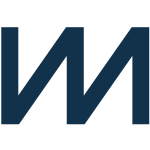About Facebook Ads
Facebook Ads generates valuable data that can help you better focus your marketing pursuits both on Facebook and in other advertising ventures. It provides you with tools to track your ad performance at all levels, from a single ad to a whole ad campaign and provides insights that can show you exactly how those ads are converting into actual sales.
About ChartMogul
ChartMogul can turn new and existing business intelligence data into valuable analytics that companies can use to improve their market performance. ChartMogul can take subscriber data - both created within ChartMogul and imported from other data sources - and generate visualized analytics for a variety of metrics that SaaS companies care about.
Popular Use Cases
Bring all your Facebook Ads data to Amazon Redshift
Load your Facebook Ads data to Google BigQuery
ETL all your Facebook Ads data to Snowflake
Move your Facebook Ads data to MySQL
Bring all your ChartMogul data to Amazon Redshift
Load your ChartMogul data to Google BigQuery
ETL all your ChartMogul data to Snowflake
Move your ChartMogul data to MySQL
Facebook Ads's End Points
Facebook Ads Campaigns
Track data on your ad campaigns, including the Facebook campaign objective, duration, and status - as well as campaign and account ID's that will allow you to easily integrate this data with related data from other sources.
Facebook Ads Ads
View information about an individual ad, including what ad set it belongs to, the image used in an ad, and how much you are bidding for the ad's use. Then, use that data to track the overall advertising cost of this ad along with its individual performance within an ad set.
Facebook Ads Ad Sets
Monitor the performance of a collection of Facebook ads that share a single criteria and budget. This data includes the budgeted amount, what remains from your Facebook Ads budget, and how that ad set is targeted.
Facebook Ads Insights
See the ways in which your Facebook ads are turning into revenue for your business by tracking cost-per-click, number of conversions, and the type of conversions you are getting. Then you can integrate that data with your ad sets, campaigns, and accounts via their unique ID's.
ChartMogul's End Points
ChartMogul Plans
Gather data about your subscription plans - like the subscription IDs, names, billing intervals, and the number of intervals that are charged at once - to evaluate the performance of each plan. This will help you better understand the effectiveness of your plans so that you can determine which ones are more or less successful as a whole.
ChartMogul Customers
Create, retrieve, or update data for new or imported customers in ChartMogul. This allows you to see important customer contact details, customer IDs, and valuable performance data including a customer’s MRR, ARR, and industry sector. You can then use that data to better segment your customers, which can provide more accurate and specific information about your business performance.
ChartMogul Invoices
Import invoice data for customers that you are tracking through ChartMogul, including customer IDs, dates of purchase, transactions, and any relevant line items. Then, use ChartMogul to create subscription data for those customers and use that data to track more specific revenue data, both in ChartMogul and in your other data sources.
ChartMogul Transactions
Track payments or refunds made on an invoice to see the transaction ID, type of transaction, transaction date, and whether or not the transaction was successful. This can help you get more accurate analytics from your invoice data. It can also indicate when there is an unusually high number of refunds, which could signal a problem worth addressing.
ChartMogul Subscriptions
Get a list of subscriptions that ChartMogul has automatically generated from invoice data. This endpoint returns several IDs - including subscription IDs, customer IDs, plan IDs, and data source IDs - that will help you to more easily track and integrate data between any of those parameters to create deeper, more accurate business analytics.
ChartMogul Tags
Use tags to track terms that are associated with a customer so that you can segment or monitor them more specifically. For example, you could tag a particular customer as “high priority,” “returning” or anything else that is relevant to your business, and then retrieve a list of customers who have been tagged with those attributes in order to analyze them as a segment.
ChartMogul Custom Attributes
Update customer data with ChartMogul custom attributes that are more specific to the needs of your company. This can include both tags as well as more complex custom attributes. Then, track those attributes in ChartMogul to get analytics that are focused on your particular business concerns.








